| |
Could tiny Port Royal have become Tennessee’s capital?
By Tom Adkinson
June 24, 2022
PORT ROYAL, Tennessee – The confluence of Sulphur Fork Creek and the Red River in today’s parlance is in the middle of nowhere. It’s difficult to imagine how a once-upon-a-time town in the countryside east of Clarksville might have become Tennessee’s capital.
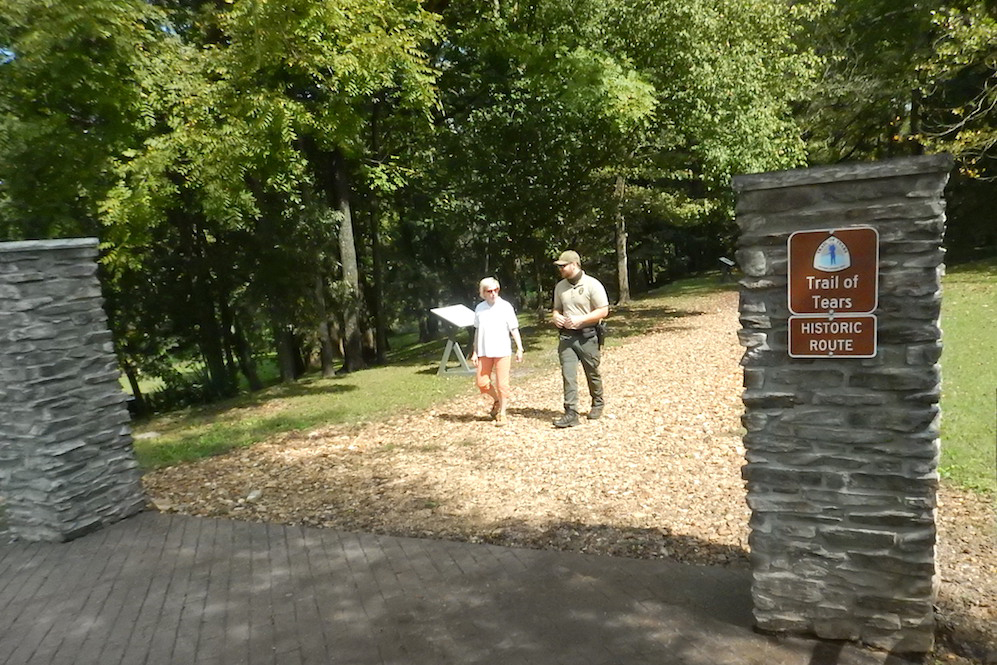
Bucolic, not bustling, is the word to describe today’s Port Royal. It once was key in the international tobacco trade. Image by Tom Adkinson
|
Even harder to imagine is how Port Royal, now unincorporated, played a significant role in international trade and America’s move west.
Those are reasons to slip off of I-24 to visit Port Royal State Historic Park, one of the smallest of Tennessee’s 56 state parks.
Tobacco created Port Royal’s early fame and importance. The tobacco was destined for England, and the journey started precisely where you can lay down a picnic blanket today and maybe catch a fish in the Red River.
Bobby Cooley, a state park ranger, brings Port Royal to life on narrated walks through the few visible remnants of a once-bustling town. Historical markers explain the building foundations you see, but Cooley’s talks are more illuminating.
“We pack a lot into 30 acres,” Cooley said, while telling stories about the world’s largest tobacco plantation, a federal tobacco inspection station, a boatbuilding industry, the Trail of Tears, a failed attempt to establish a silk industry, the resilience of freed Blacks after the Civil War and multiple floods that turned Sulphur Fork Creek and the Red River into destructive torrents.
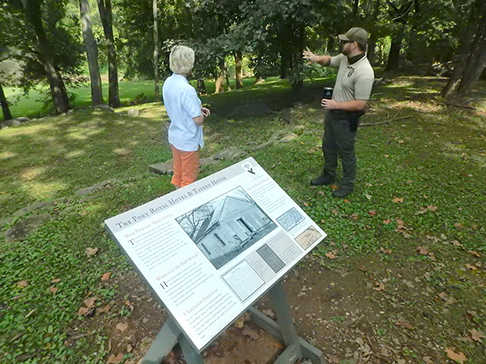
Park ranger Bobby Cooley describes the scale of an early-1800s hotel and tavern house in Port Royal. Image by Tom Adkinson |
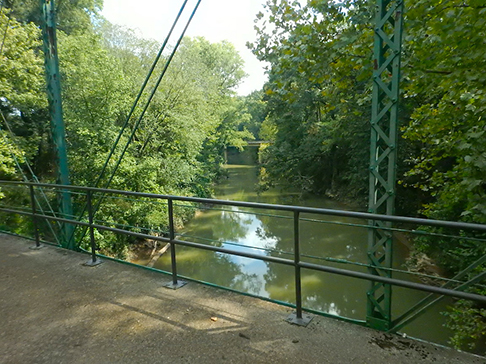
Sulphur Fork Creek looks placid, but it has flooded over the top of this one-lane bridge connecting Montgomery and Robertson counties. Image by Tom Adkinson |
Settlers pushed into the area about 1789 and established Port Royal in 1797, one year after Tennessee statehood. Even in the heart of the country, Port Royal was strategically located for international trade, and local lore says it has prospects to be the state capital.
Tobacco farming was huge. In fact, Cooley says that nearby Wessyngton’s 13,000 acres made it the world’s biggest tobacco plantation. Almost 300 enslaved Africans produced 250,000 pounds of tobacco a year.
After federal inspection at Port Royal, half-ton barrels of tobacco filled flatboats that went town the Red, Cumberland, Ohio and Mississippi rivers to New Orleans. One-fourth of those flatboats didn’t make it to New Orleans.
Port Royal also was on a pioneer route as the United States spread westward. When Missouri and Arkansas opened for settlement, the majority of people leaving from southern states passed through Port Royal.
On a tragic note, that traffic also included approximately 12,000 Cherokee people forcibly marched on the Trail of Tears from their Appalachian homes to Oklahoma. That was in 1837 and 1838. A trail traces part of that route.
Entrepreneurs developed a silk industry here in the early 1840s – Gov. James Jones delivered his inauguration speech in a suit made from Port Royal silk – but Cooley said the effort died when a pandemic killed the silkworms.
The railroads bypassed Port Royal, and it was fading by the 1850s. The Civil War furthered its decline.
Freed Blacks added chapters to Port Royal’s story after the Civil War. They opened businesses, founded Mt. Zion Baptist Church (the congregation remains active) and established the Benevolent Lodge to care for the sick and bury the dead. The church and lodge were victims of racial violence, most recently in 1994, when a lodge building was burned. It reorganized and today is known as Benevolent Lodge No. 210.
For decades in the 1900s, a covered bridge was a local landmark, but floods took out more than one version of the bridge.
“The 2010 flood (the one that devastated downtown Nashville) removed all ideas of building another covered bridge,” Cooley said.
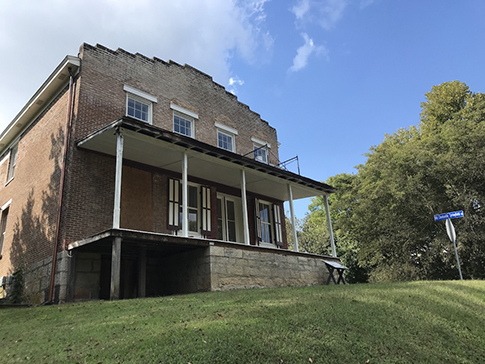
This 1859 general store and Masonic lodge gradually is becoming a visitor center for Port Royal Historic State Park. Image by Tom Adkinson |
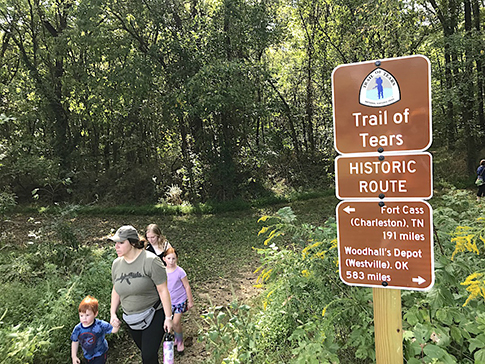
A family emerges from a hike along the Red River at a spot where 12,000 Cherokee people were marched westward in 1837 and 1838. Image by Tom Adkinson |
Port Royals’ one substantial building is well above the high water mark. It is a general store and Masonic lodge from 1859 that is gradually undergoing restoration as a visitor center.
Whether you walk with Cooley or stroll on your own, pause before departing. Contemplate the hopes, dreams and labor that lived and died where Sulphur Fork Creek flows into the Red River.
Trip-planning resources: TNstateparks, ExperienceRobertson.com, VisitClarksvilleTN.com and TNvacation.com
(Travel writer Tom Adkinson’s book, 100 Things To Do in Nashville Before You Die, is available on Amazon.com.
|

